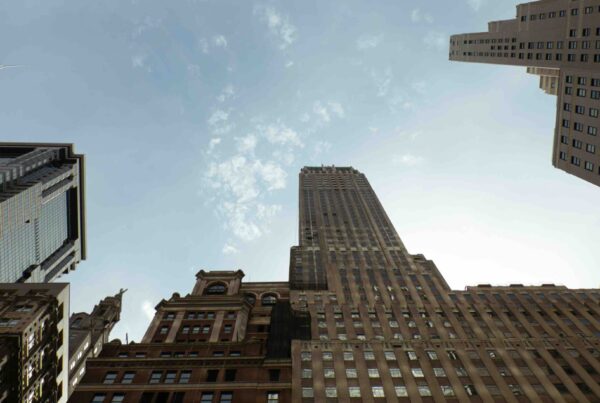5 Reasons to Purchase Repositioned Assets
10/01/2018
The secret to long term investing is figuring out how to be active in every market. It’s all about having a “line in the water.” Today, most NYC multifamily investors have been pushed to seek higher yield, and sometimes more risk, in their investments.
This has kept pricing very competitive in the value-add segment of the NYC multifamily market, while pricing on repositioned and finished assets have softend since 2015. Some observers call this a “mispricing of risk.”
Yes, buying finished buildings often means you are buying a building at a higher price per foot, and with higher current rents, but investing in real estate is often about finding the right combination between appreciation and cash flow. Let’s look at some reasons why repositioned assets are interesting.
1. Pricing Disconnect
Amid fierce competition for value-add, repositioned assets look attractive. It’s the biggest pricing disconnect in the market today. This disconnect is something investors can take advantage of. With value added investments selling in the 3% cap range, and renovated closer to a 5% current return, the market is indicating investors should be taking a harder look at core assets.
The New York Multifamily team has recently listed a class A Astoria luxury building with a cap rate of 5.5%. That’s well over the average cap rate for Queens multifamily transactions in the first half of 2018, of 4.3%. Or for example, an East 7th Street asset, which is 100% fair market-rate and asking $22.95 million, implying a cap rate of 4.7%.
2. Rent-Stabilization and Political Risk
The cost associated with repositioning multifamily assets has grown appreciably as the city has become more aggressive with landlords. The free market deregulation threshold is now $2,733 per month. Recent tweaks to rental laws have allowed for an increased number of random “audits” of properties subject to rent regulation and augmented “harassment protections” for tenants.
While tenants’ rights are important for our city, such overarching laws can have unintended consequences. Each expansion of housing regulation adds layers of potential litigation, costs and bureaucracy for landlords attempting to reposition assets. This reduces profitability on turnaround projects.
Investors can circumvent much of this risk by purchasing a building where this work has already been completed
[ctt link=”Yt7xM” template=”1″]The secret to long term investing is figuring out how to be active in every market. [/ctt]3. Interest Rates
As interest rates rise, the timing on renovating and refinancing becomes more significant. Buyers purchasing value-add projects often use short term acquisition loans for those properties. If the construction overruns and rates rise beyond projections, much of that upside could melt away as rising financing costs devour profit.
Purchasing a repositioned property with long term, fixed-rate debt could help ensure a stable cash flow and protect an investor from rate risk. The current rate for ten-year money on conventional properties still hovers at historic lows and should be taken advantage of.
4. Real Estate Tax Increases
All owners need to be diligent in their underwriting of increasing real estate taxes.
“As the amount of spending in the city budget rises, so do property tax bills — raking in $27.7 billion in fiscal year 2018,” reads a March report in the NY Post. “That’s a cumulative growth of 37%, or $7 billion, since 2013.”
This impacts tax projections on valued added projects as tax increases are phased in as a property’s income rises. Most Manhattan buildings underwrite taxes to approximately 25% of gross income. In the case where renovations have occured, this often means 40% of the increased rent (post renovation) will be paid as property tax. Effectively, this reduces the profitability of doing renovations. If it’s less profitable, why do the work?
5. Less Work = Less Risk
We have covered purchasing costs, rent regulation costs, interest rates, and real estate tax increases. The final aspect of comparing value add to repositioned assets is actually doing the construction work, and this gets to the heart of the matter. Most value added investments, purchased at 3% going-in returns will be built to a 5% cap rate. If one can purchase a 5% (or close to it) without doing the work you are just as well off.
Rising Market Rents
We all know rents in NYC have softened. This market dynamic will not be around forever, and based on our rental supply research, we predict a firming up of the rental market over the next 24 months.
Inevitably, this will create an opportunity for those with free market assets to capitalize on the rental growth to come — without the work required to create the value. In the current market, these investment opportunities abound. Our team has put 26 NYC buildings under contract since June 1st of this year! Many of them repositioned stabilized assets such as 26 Vandam Street, 40 West 127th Street, and 41 West 24th Street.
The secret to long term investing is figuring out how to be active in every market. Today, the opportunities may be found in doing less work, not more.
facebook LinkedIn Instagram Twitter




